Have you written a book, album, thesis, dissertation, or master’s thesis and want to share it with a wider audience than just your family and friends? Not sure where to start? We’re here to help!
Help! What is Self-Publishing?
In simple terms, it is publishing a work at your own expense, without the support of a publishing house. In this type of publishing, the author is responsible for the entire publishing process. The author is fully responsible for and depends on:
a) Content of the work:
- Information contained in the work;
- Selection of certain, reliable sources;
- Vocabulary used;
- Choice of multimedia (photos, illustrations);
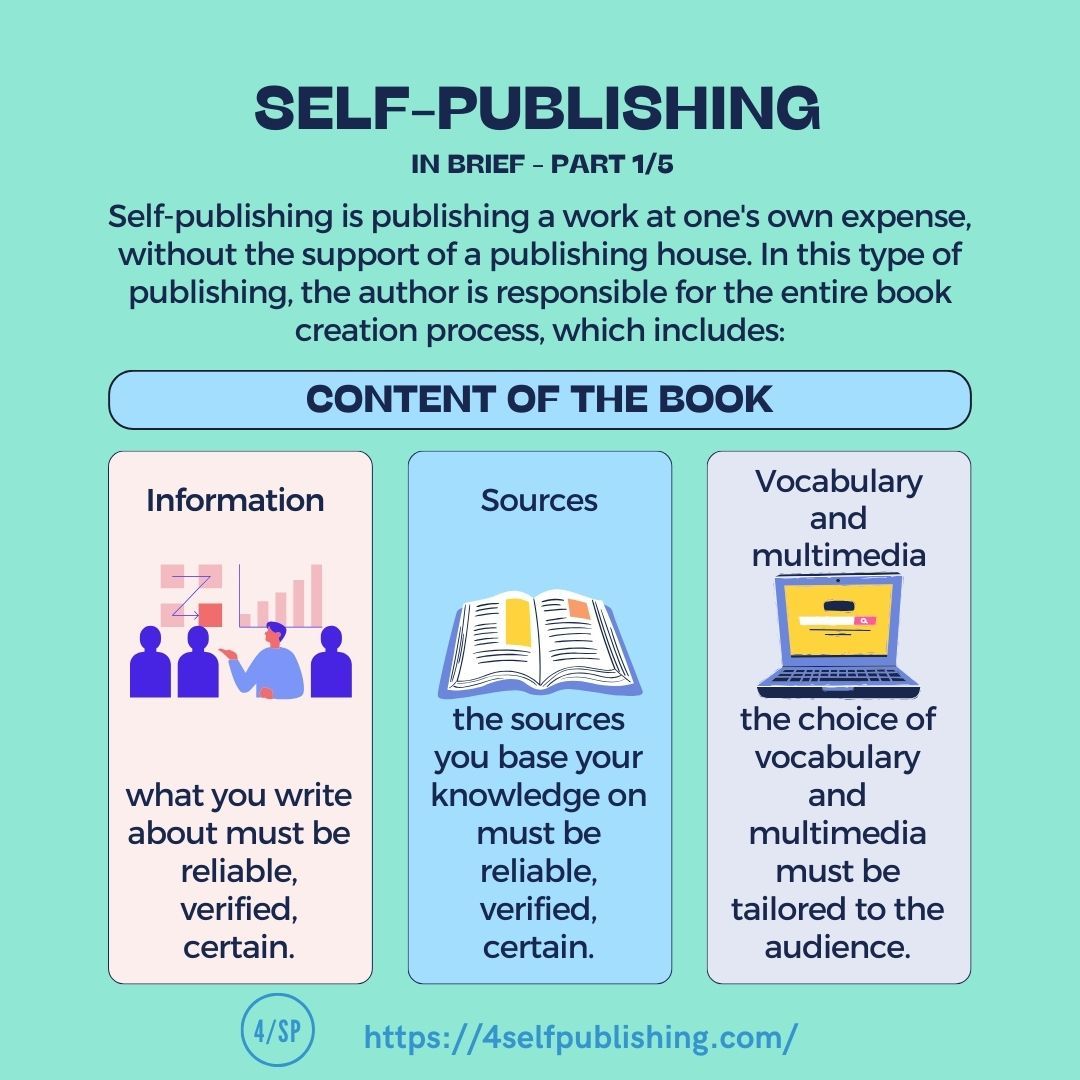
b) Appearance:
- Typographic design (i.e., the visual aspect of the text: font type, line spacing, font size, spacing between characters);
- Typesetting and layout (arrangement of text and graphics);
- Binding (cover design, in the case of print – its thickness and any other technical aspects);
- In the case of print – choice of paper (grammage (thickness), color, paper manufacturer);
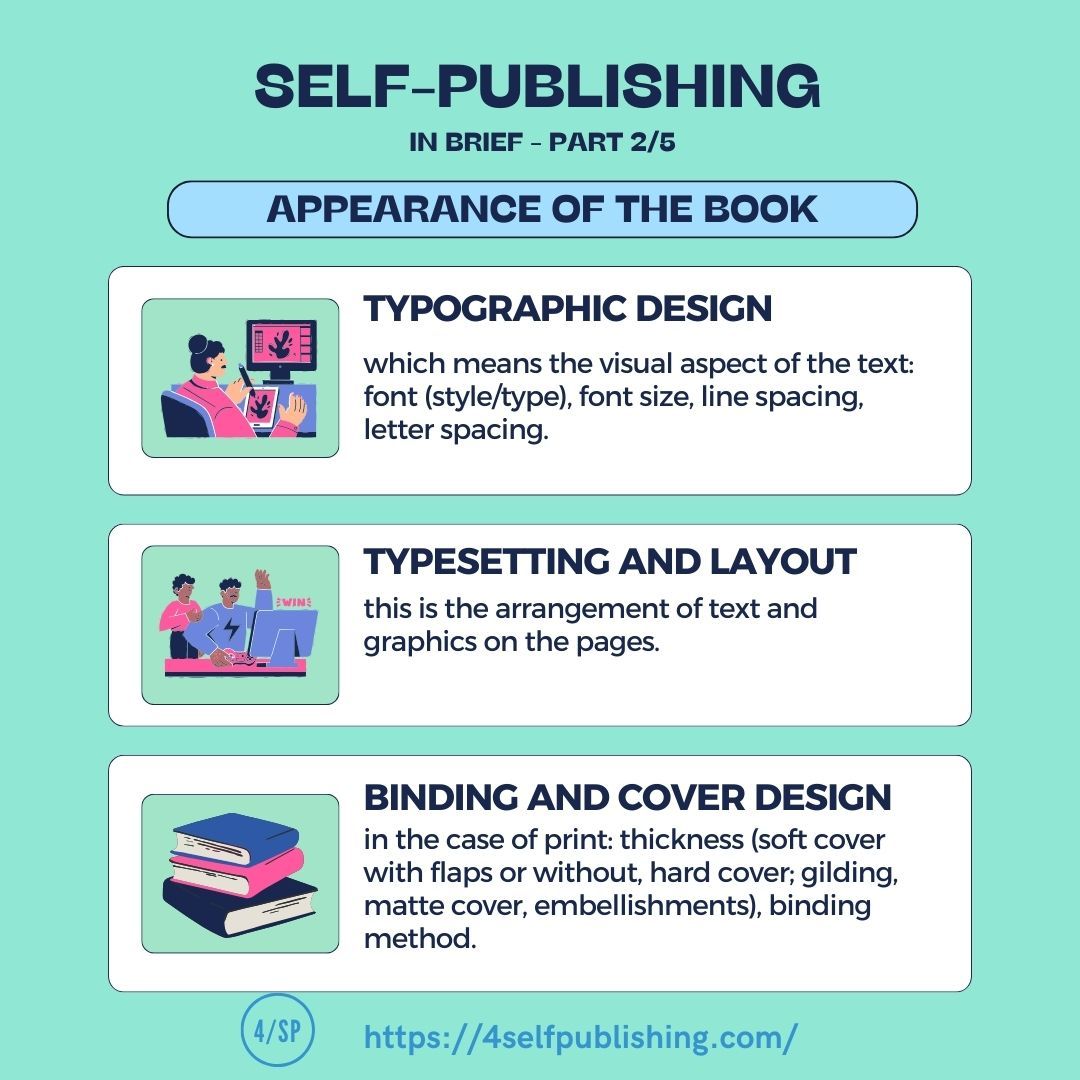
c) Marketing activities:
- Advertising;
- Social media posts;
- Promotion;
- Pre-sales and sales.
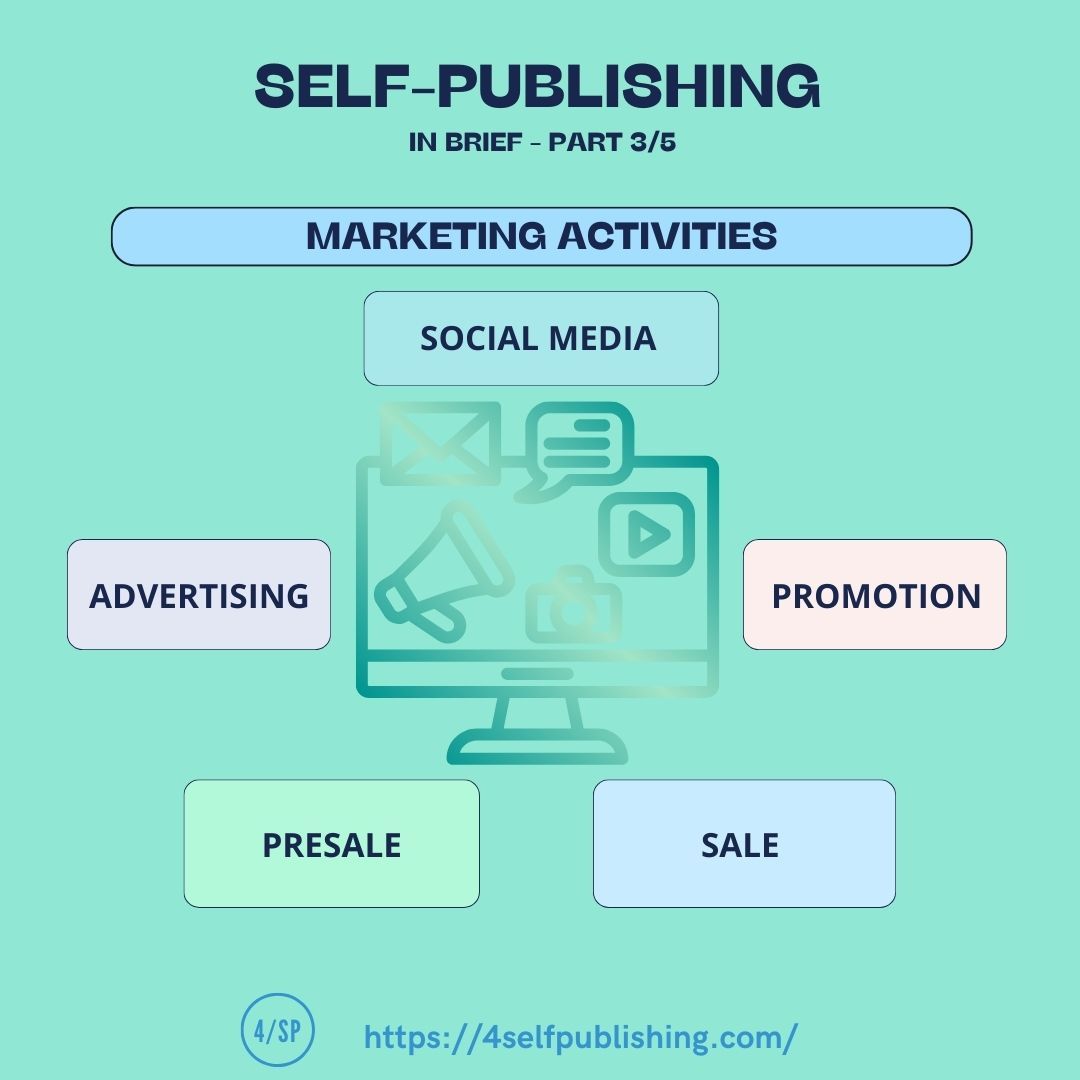
Of course, as the author, you can do everything yourself or use the help of others, such as:
- Editors;
- Proofreaders;
- Typesetters;
- Graphic designers and/or illustrators;
- Designers.
However, the entire process and all decisions are up to you because you are the author and you are publishing your book.
Where to start?
To achieve publishing success, you should initially estimate the costs. Here, you need to consider whether you are publishing printed material or an ebook, or maybe both? It all depends on you. There are pros and cons to all these options. To make a good choice, analyze your readers' needs. Then conduct a market analysis of publications on similar topics and in a similar style to your work. This will help you understand who, what, and how has been published, what has not been covered, what you can add, improve, or present better. If you already have content, it is worth confronting it with what you will reach and analyze. Once you have done this, it's time to look for reviewers who will critically assess your work and identify its strengths and weaknesses.
Is Self-Publishing for Everyone?
No. Let’s not kid ourselves; self-publishing is a task that requires not only financial investment but also a lot of work and time. If someone doesn’t have much time, it’s better to collaborate with a publishing house. In this context, it is worth noting the words attributed to author Oscar Wilde: "Something that costs little is also valued little."
To ensure that publishing your own work does not become a tedious duty but a fantastic adventure, it’s important to know for whom self-publishing is a good option:
- for those who already have loyal readers;
- for experts in a particular field (doctoral candidates, doctors, professors, etc.);
- for those who share their unique ideas, hobbies.
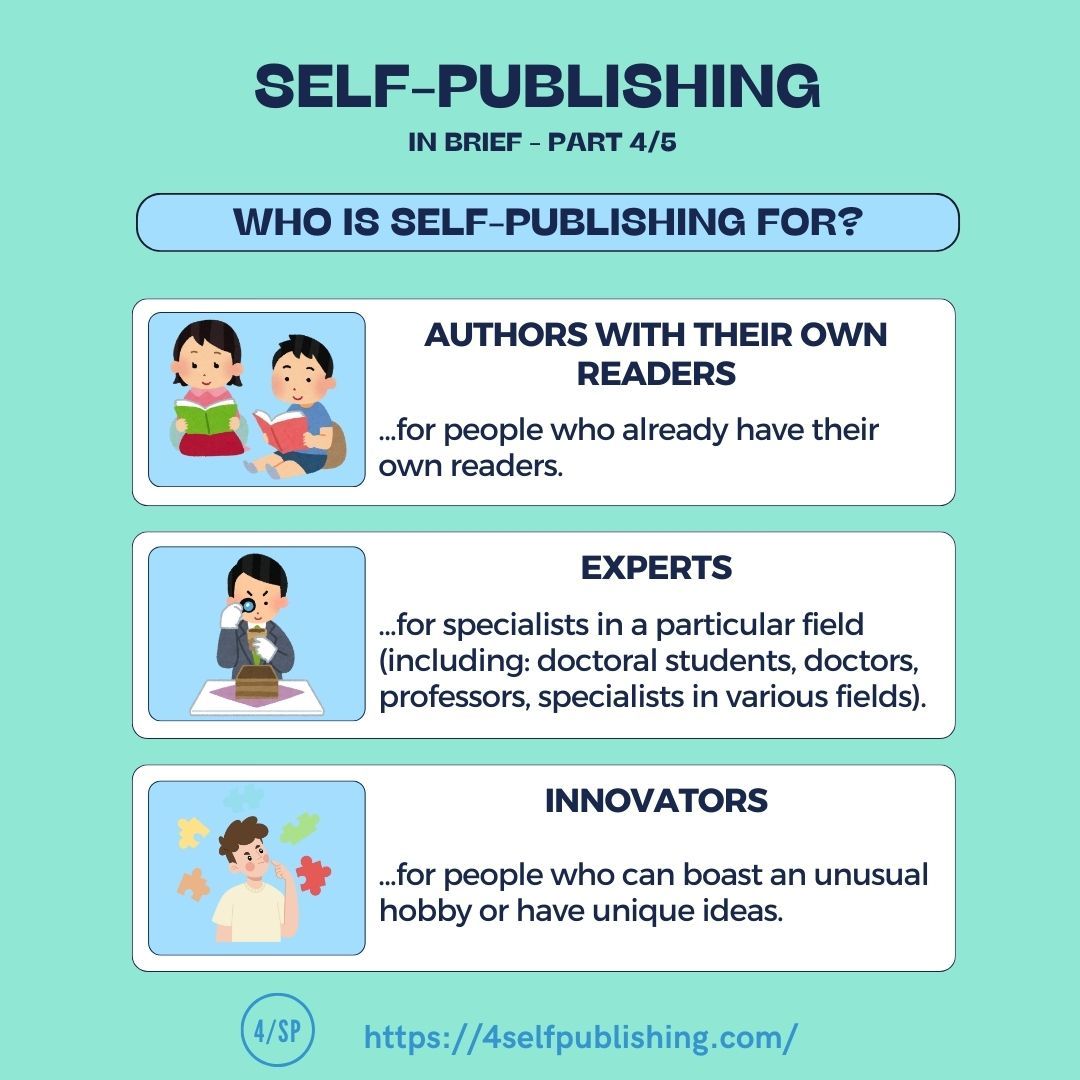
What Are the Costs of Self-Publishing?
It depends. You might ask: on what? The costs of publishing a book, whether it’s an ebook or in traditional form, are influenced by: outsourcing publishing tasks, i.e., what you decide to delegate to others (e.g., editing, proofreading, typesetting, graphics (illustrations, photos, infographics, or other graphic projects), design, advertising, and marketing); distribution of the work (transportation, storage, shipping); advertising activities (banners, press or internet ads, personal website or blog, sponsored texts online); format of the work (ebook or print book, considering the cost of cover type and paper weight); collaboration with bookstores (large or small, local).
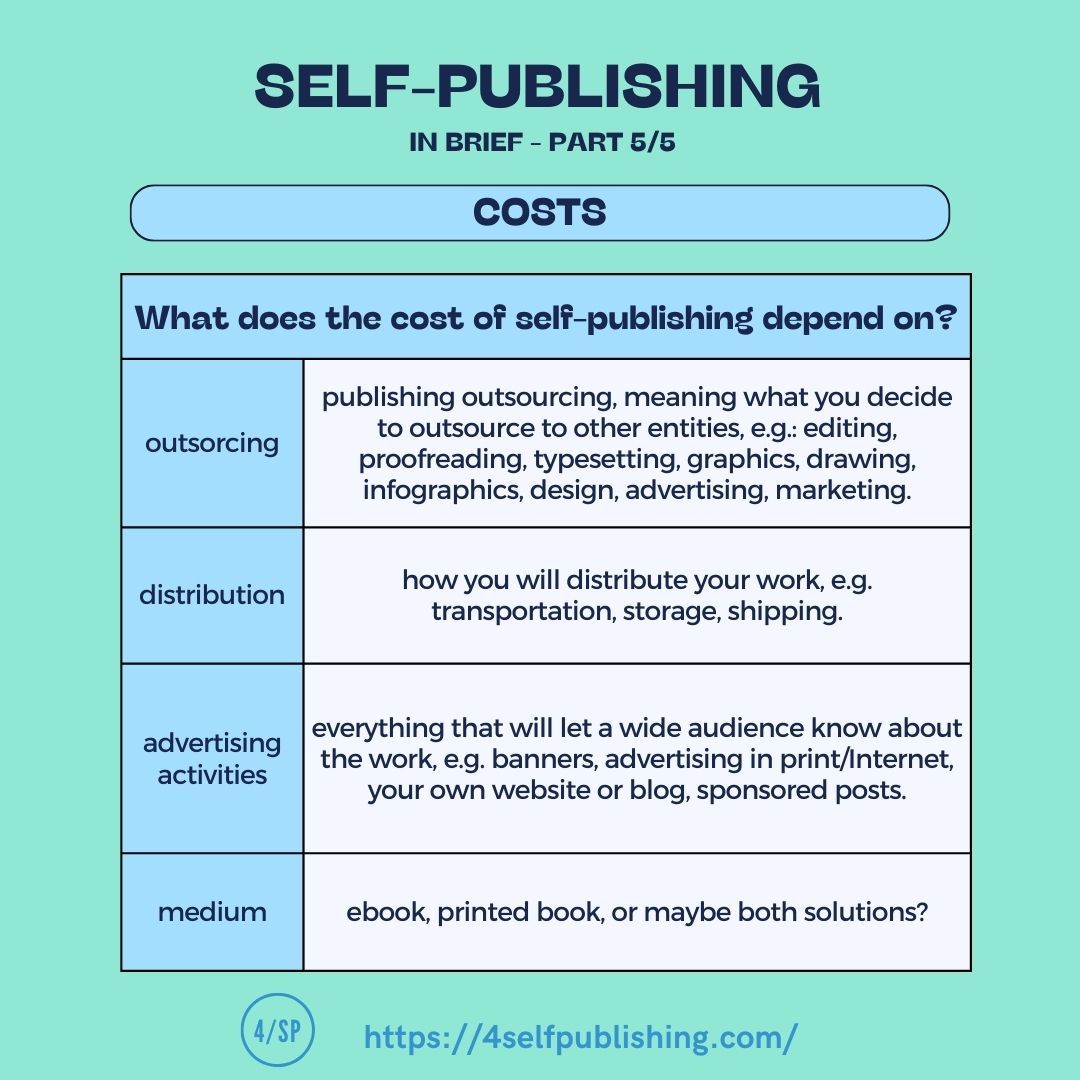
As you can see, there are too many variables to definitively determine the cost of publishing a book. Much also depends on the choice of individuals to whom you delegate tasks. If you opt for experienced professionals or, in the case of graphic designers or illustrators, those with years of experience and success, expect higher costs for their creativity and work.
Content - quality
For readers to buy your work, it must be of good quality. The market is currently saturated with low or negligible quality works. This affects everyone – from readers to authors and publishers. Therefore, to ensure the success of your work, consider whether it is worth saving on editing, proofreading, typesetting, or graphic design. It is also good to consider using critical groups, beta readers, or specialists. Quality takes time, but this effort can pay off with many thousands of copies sold.
The Best Time to Publish a Book
Finally, it's worth asking yourself: "When is the best time to publish your book?" The answer is simple: when you have good material and text. Any time of year is good for the book market:
- for long autumn and winter evenings, winter vacations, the first day of spring, summer vacations;
- for birthdays and/or name days, or important life events (weddings, births);
- for the end of the school year, or graduation;
- for holidays, Children's Day, Mother's Day, or Father's Day.
A good book is always a great gift.
